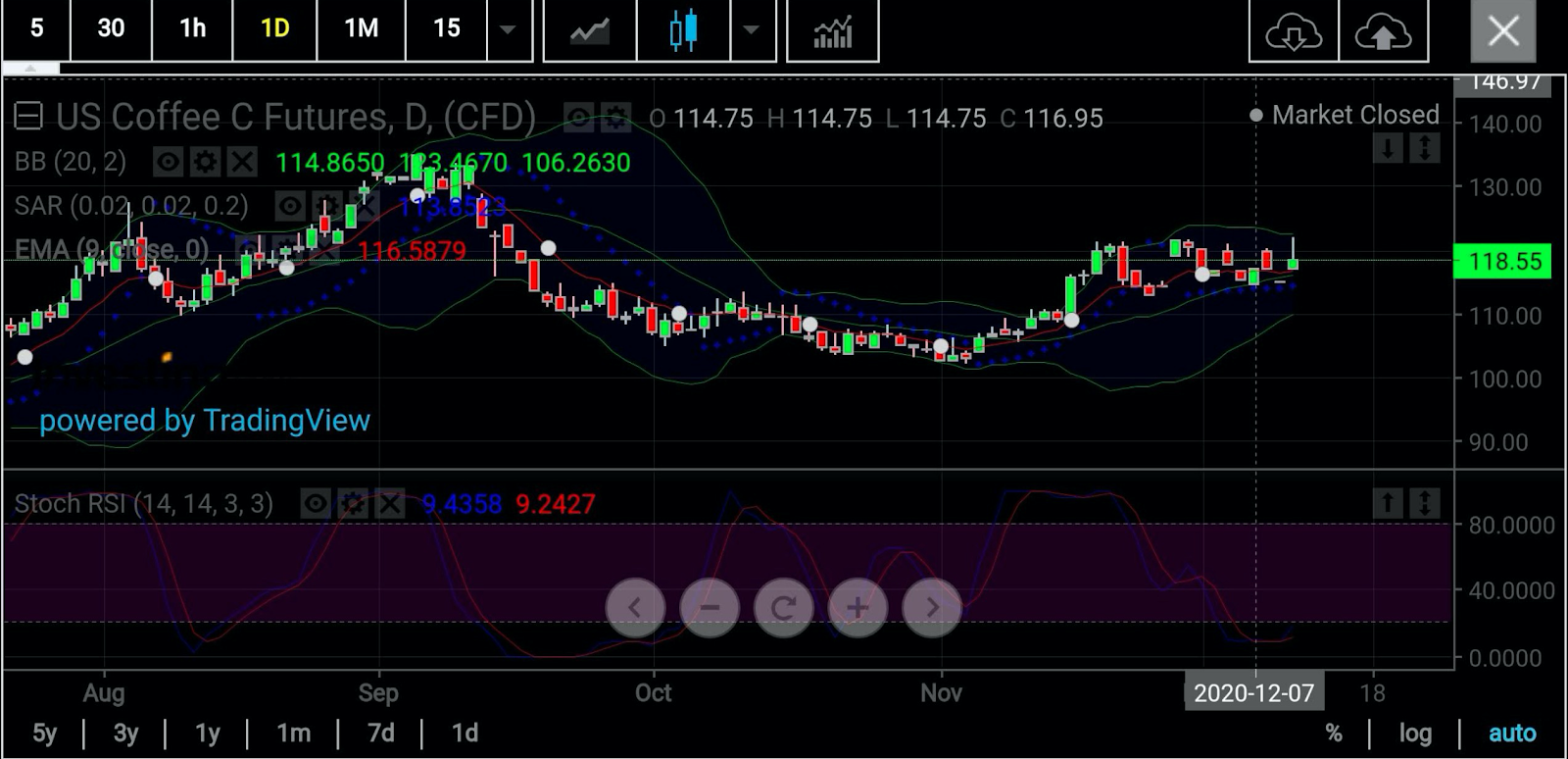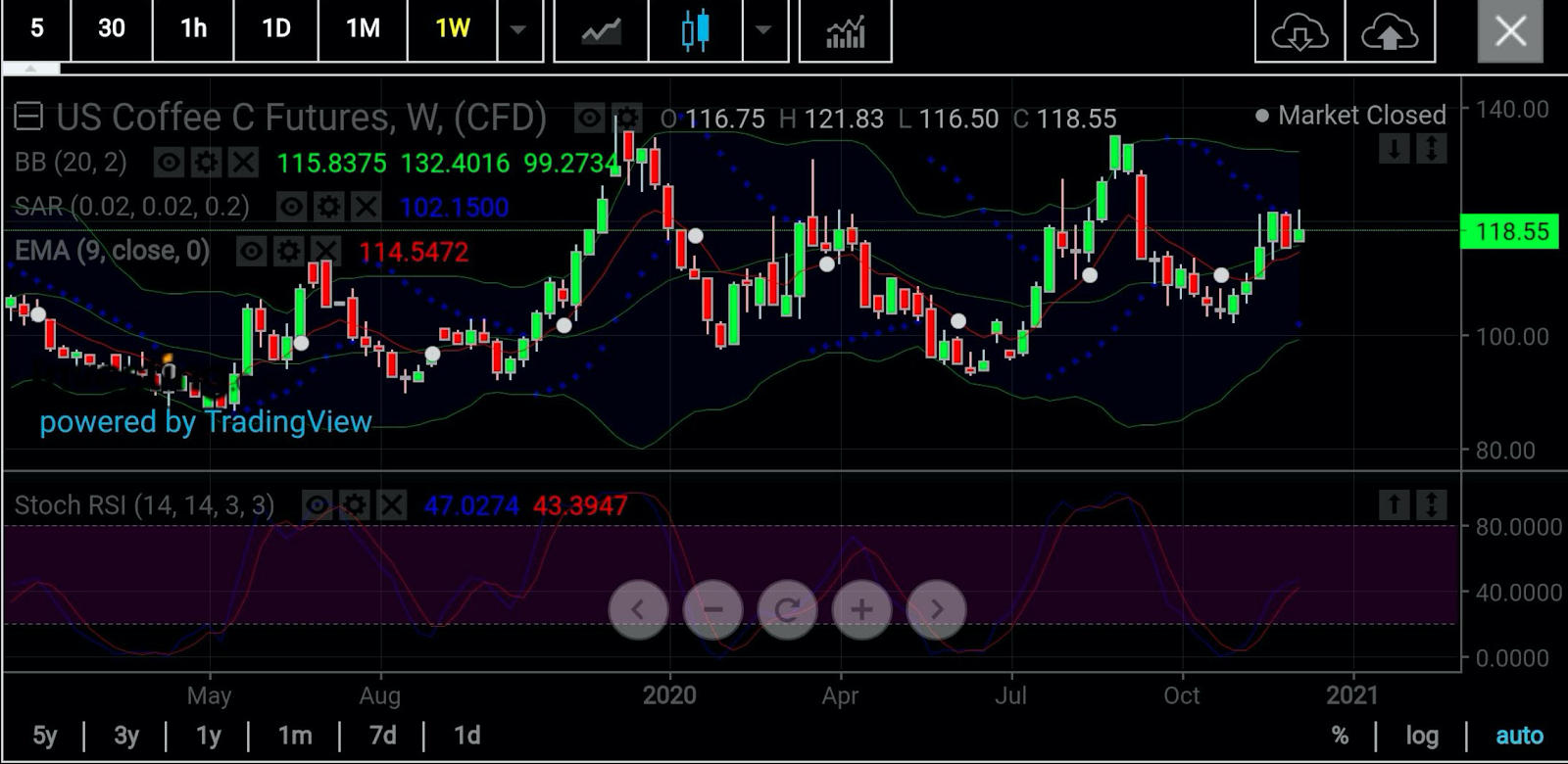US stock futures steady with China trade talks, Q3 earnings in focus
Coffee is coming back in a big way. At least according to Starbucks’ plans for 200,000 additional stores, which would put one on every major US street corner. A commodity investor, meanwhile, may need more excitement to get into arabica—the bean used to brew all of Starbucks (NASDAQ:SBUX) coffees—given its near zero percent compounded return over the past five years.
At Thursday’s settlement, front-month arabica on ICE futures US was at $1.1855 per lb, heading for a 9% loss on the year if there is no additional appreciation by Dec. 31.
Aside from a banner 2019—where it posted a whopping 27% return—and a relatively decent 2016—where it gained 8%—arabica has had a lousy time since 2016, with an average 0.3% compounded return. Long or short, there had been simply nothing much to make on the commodity.
Starbucks Optimistic Despite Dire US Outlook
San Francisco-based Starbucks is brimming with optimism over what the future holds for its 50-year-old brand.
This comes after the US economy grew by 33.1 percent in the third quarter, making up somewhat for the 31.4 percent contraction in the previous three months following 5 percent growth in the first quarter.
In the United States more than 21 million jobs were lost between March and April, during enforced lockdowns from the COVID-19 pandemic. A rebound of 2.5 million jobs was logged in May and 4.8 million in June, before the recovery began slowing. For both September and October, less than 700,000 jobs were added each month. In November, there were just 245,000 additions.
Notwithstanding the Q3 economic rebound, the economic outlook for the United States remains dire. A rash of new coronavirus infections across a nation with more than 15 million COVID-19 cases since January, and nearly 300,000 fatalities. Hospitalizations have also hit daily record highs of above 100,000 in recent weeks, even as vaccine development efforts have been showing promise.
Commercial Coffee Demand Weak
Also, there’s no real assurance yet for a spike in commercial coffee demand in 2021, despite the promise of vaccines and other relief, said Jack Scoville, analyst at Chicago’s Price Futures Group.
He adds:
“The demand from coffee shops and other food service operations is still at very low levels as consumers are still drinking coffee at home. Reports indicate that consumers at home are consuming blends with more robusta and less arabica.”
On the production side, growing conditions for arabica in top producing country Brazil are getting better with rains improving flowering after an extended dry season, said Scoville.
But on the flip side, he argues that Brazilian arabica exports have also been steady, balancing the higher harvest that would likely come.
Price-wise, arabica also has a couple of things in its defense that may prevent further value deterioration. They are:
- A strong Brazilian real that underpins the dollar value of the commodity
- Worries over the impact of recent hurricanes on central American output.

Charts courtesy of SK Dixit Charting
Arabica Charts Firm After 5 Years Of Near-Zero Compounded Return
Arabica’s technicals suggest that its front-month could reach $1.34 to $1.38, says Sunil Kumar Dixit of SK Dixit Charting in Kolkata, India.
But in order for those peaks to be achieved, arabica needs to hold well above support levels of $1.15 and $1.09, adds Dixit.
He said the longer time frame monthly charts of arabica hint at an emerging rounding bottom pattern, which may be confirmed should it take out the $1.39-$1.40 top with volume support. Dixit added:
“Back-to-back five years, the price has been range-bound and pattern completion may help the commodity usher in higher price zones if support stays.”

Despite the lacklustre five-year compounded return, Investing.com’s Daily Technical Outlook has a “Strong Buy” call on arabica, with my own three-tier resistance at $1.21, then $1.25 and later $1.28.
Should the front-month buck the trend and turn bearish, then support will likely start from $1.16 through $1.13 and later $1.11.
 As with all projections, we urge you to follow the calls but temper them with fundamentals—and moderation—whenever possible.
As with all projections, we urge you to follow the calls but temper them with fundamentals—and moderation—whenever possible.
Happy weekend, everyone!
Disclaimer: Barani Krishnan uses a range of views outside his own to bring diversity to his analysis of any market. He does not own or hold a position in the commodities or securities he writes about.
